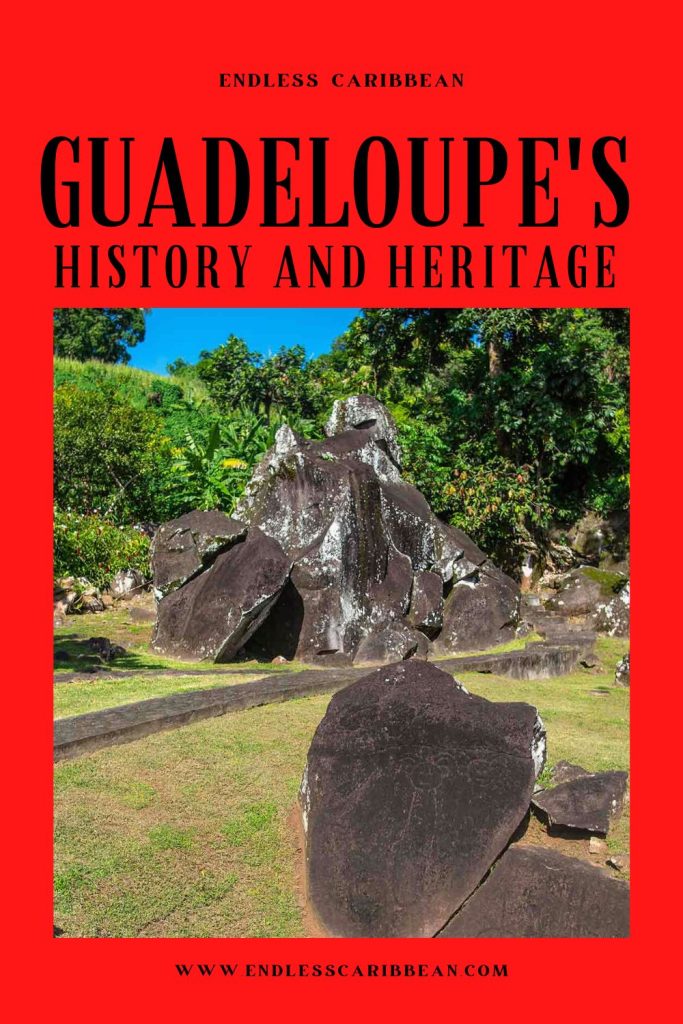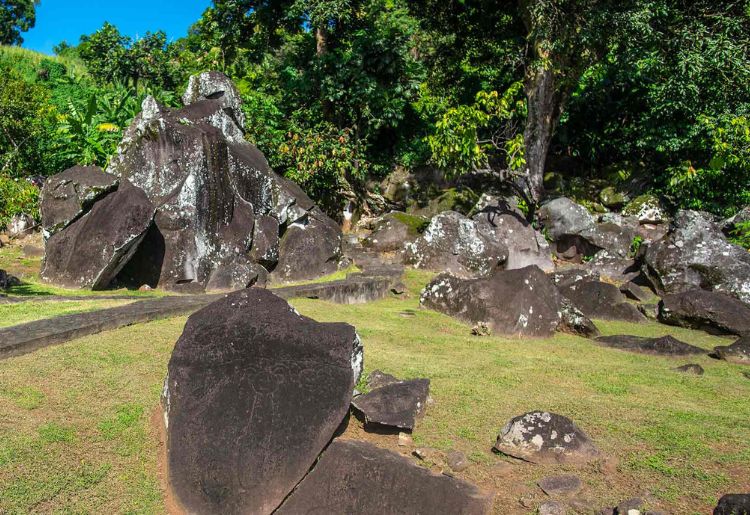Guadeloupe’s history and heritage has shaped the country’s national identity which consists of its language, religious beliefs, social construct, economic and political institutions, culinary and cultural ideas. Research into the island’s rich and fascinating history will reveal a comfortable and harmonious blend of diversity. As a result, there are many lessons to be learnt from the early days of Guadeloupe, the development of the island over the years, and the modern-day Guadeloupe.
The Early Days of Guadeloupe’s History and Heritage
The recorded origins of Guadeloupe date back almost 3,000 years ago when amerindian tribes lived on the island. Evidence of their presence has been found in various archaeological sites. It is believed the first amerindians on the island were the Arawaks, who made their way from Venezuela and South America. They were skilled people who lived off the earth and engaged in farming and fishing.
However, the thriving presence of the Arawaks was altered with the arrival of the Caribs. When the Carib Indians moved into the island and claimed it for themselves, the Arawaks were no more. The presence of the Caribs also resulted in the island’s amerindian name “Karukera” which is Carib for “the island of beautiful waters.”
Major changes also came for the island with the arrival of Christopher Columbus in 1492. He gave the island the name “Guadeloupe” in honour of a monastery called the Santa Maria de Guadalupe. Spanish settlers found themselves at war with the Carib Indians who fought tireless to protect the land. However, Spain also found resistance from the French who moved in and drove them away.
When the French took control in Guadeloupe, their mission was to establish sugar and coffee plantations. They brought people from Africa to work on the plantations, which became prosperous. Sugar production was very lucrative and resulted in large economic gains for the French. Thankfully, the slave trade was abolished in 1848. But Guadeloupe remained under the rule of the French.
Elements of Guadeloupe Culture
Given its exciting past, the island of Guadeloupe has an equally exciting culture that is inspired by its history. This culture includes language, music and dance, art and craft, food and literature.
French is the official language, but there is a widely spoken Creole dialect. It is a blend of the languages used by previous settlers on the island. Guadeloupe’s Creole includes amerindian, African, British, Spanish, and French terms, idioms, phrases, and expressions. To preserve Guadeloupean Creole on the island, it is taught in schools as part of formal education programs.
Music and dance are pillars of Guadeloupean culture. Both genres play major roles in festivals, carnivals, and other key cultural events. Traditional musical genres include gwoka, Creole waltz, acoustic kreyol, and zouk. Popular dances in the island are the beguine dance and the gwoka dance.
Tasting food in Guadeloupe is an adventure with flavours and scents. In similar fashion to the Arawaks who once lived on the island, chefs and cooks use local ingredients for their culinary creations. The results include stellar Guadeloupean dishes that honour the island. Some of the famous local dishes are colombo curry, bebele, congo soup and conch fricassee.
Embracing the Modern Guadeloupe
Today, Guadeloupe is home to just under 406,000 people. It is still a French Overseas department and is has two main districts which are Basse-Terre and Pointe-a-Pitre. Unlike some of the other countries in the Caribbean, its economy is heavily influenced by agriculture. The island is a successful exporter of bananas and sugar. Additionally, the island also produces and exports of rum. However, it should be noted that the local Guadeloupe market is the main market for agricultural rum production.
Guadeloupe’s tourism sector is growing because of the island’s increasing portfolio of tourism resources. There are beautiful landscapes and seascapes, a diverse database of accommodation as well as numerous activities, attractions and events that showcase the best of Guadeloupe.
In addition to being a Caribbean destination for traditional tourism activities, the island is also developing as an alternative tourism destination. Visitors to the island will find activities that support interests in birdwatching, culture, heritage, and history; extreme sports such as kitesurfing and windsurfing and weddings and honeymoons.
How to Experience Guadeloupe’s History and Heritage
To experience Guadeloupe’s history and heritage, there are many places of interest that are open to the public. Here is a list of the must-visit history and heritage sites in Guadeloupe:
- Beausoleil Plantation (Montéran, Saint-Claude): Sugar plantation
- Fort Louis Delgrès (City of Basse-Terre): Commemoration of an anti-slavery uprising
- Vanibel Plantation (Vieux-Habitants): Vanilla plantation
- La Grivelière Plantation (Vieux-Habitants): Coffee plantation
- Indigoterie de L’Anse à la Barque (Vieux-Habitants): Indigo plantation
- Belmont Plantation (Trois-Rivières): Slave cell
- Musée Victor Schœlcher (Pointe-à-Pitre): Museum in a medieval house
- Fort Fleur d’Epée (Bas du Fort, Le Gosier): Fortress guarded by three cannons
- Monument to Liberty (Petit-Canal): Memorial for the enslaved people
- Canal des Rotours (Morne-à-l’Eau): Canal built by enslaved people
- La Mahaudière Plantation (Anse-Bertrand): Cotton and sugar plantation
- Le Cimetiere d’Esclave de Sainte-Marguerite (Sainte-Marguerite, Le Moule): Beach cemetery for enslaved people
- Néron Plantation (Le Moule): Sugar factory
- Plantation Grand-café: Coffee and banana plantation
Additionally, there is a tour which includes some of the sites listed above, that allows visitors to discover sites that were prominent during slavery on the island. The five-day, four-night itinerary is part of the UNESCO Slave Route Project. For more information about the tour, visit the Guadeloupe Islands website.
Further Reading
To learn more about Guadeloupe’s history and heritage, visit the following links:
Avis Guadeloupe: About Guadeloupe
The Directorate of Cultural Affairs (DAC) of Guadeloupe: Guadeloupe in Brief
Region Guadeloupe: Guadeloupe, A Land of Cultures and Flavours
Guadeloupe Islands: Diversity and Traditions
Guadeloupe Islands: Black Heritage History
Cuisine Noir: Guadeloupe Islands: Black Heritage Preserved in History and Culture
Region Guadeloupe: Guadeloupe, A Land of History
Slavery and Remembrance: The Slave Route—Traces of Memory in Guadeloupe
Image: Guadeloupe Islands
Related Posts
- History and Heritage in St. Vincent and the Grenadines
- The Many Cultures in Haiti
- Visit 6 Historic Sites in Barbados
- St. Kitts and Nevis’ Arts and Culture Scene
- National Parks in the Caribbean

